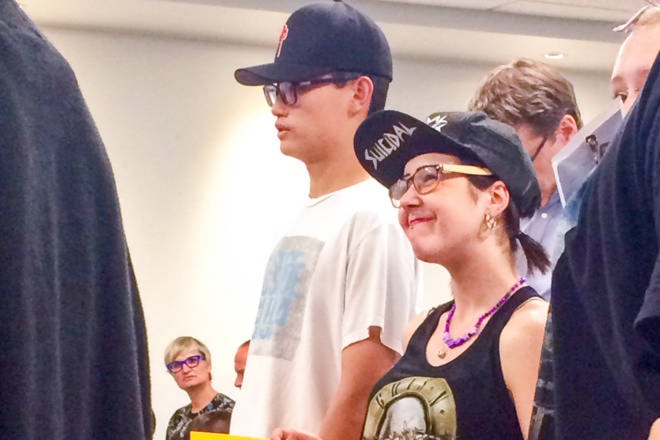After years of slowly working toward their goal, the YES Project is nearing their goal of making a youth resource centre in Penticton a reality.
The project stretches back to 2012, when a bequest was left to the Community Foundation of South Okanagan-Similkameen and the United Way with the intent of helping youth in Penticton.
A year-long study resulted in a 2013 report, with three key findings, one of which was the need for a youth resource centre in Penticton.
More: Penticton teens lack affordable activities, social services: report
“That came from interviews with about 100 youth and dozens of service providers,” said Aaron McRann, executive director of the Community Foundation. “The research came back that we didn’t have enough resources in our community for young people.”
The idea of a youth centre can be slippery to grasp. The concept isn’t just to create a place where youth can hang out or play games, or a place just to locate services for youth. Instead, the YES project is talking about building something that incorporates aspects of both.
There would be room for youth to just hang out, play games or chat, but there would also be services aimed at helping youth on site. That way, nervous or anxious youth could take whatever time they needed to be acclimated before slipping over to the services side.
Both sides of the facility will work together, said Amberlee Erdmann, YES project coordinator. On one hand, the youth space will address the lack of free and accessible youth activities in the community, while the service side will bring together a variety of agencies offering youth services.
The youth space also provides a safe place and a lure for at-risk youth that are shy, nervous or scared to ask for help.
“If that kid comes in and just hangs out on the couch for two or three months and eventually works up the nerve to ask for help, that’s what the centre can do. They will never get that from a community centre,” said McRann.
There are more than 20 agencies providing services to youth, but McRann said there are bottlenecks in the system that make it hard to navigate.
“In consultation with service providers and youth, it became clear that what we needed to do was find a way to co-ordinate the care for young people. The best way to do that was to bring as many of those services together in one place as possible.”
Working in separate locations, these services don’t have much opportunity to collaborate and co-ordinate. There could be a youth working with as many as a dozen different agencies at a time.
“That person has to tell their story a dozen different times,” said McRann. “There is lots of evidence that telling their story over and over actually re-traumatizes that person.
“By being side-by-side and delivering that service, they have an opportunity to develop a better, more co-ordinated care plan and ensure the kids don’t get lost in the system somewhere.”
Erdmann said a key factor in making the youth centre work is involvement by the youth themselves.
More: Youth raise their voices with YES Project
“Yes, it will provide activities for youth. It will also provide an opportunity for youth to attend workshops and skill building workshops. It will be a place youth can call their own,” said Erdmann. “And, it is their place. They were a part of building this place; their ideas, their values, everything that you feel is important is being taken into account in our youth centre.”
McRann said there has been research done on the value of just the drop-in centre aspect of a youth centre, that availability of that resource reduces the incidence of teen pregnancy, alcohol and substance abuse and it increases the likelihood that kids are going to go to school.
“Just the ability to hang out in a safe place improves all of those factors. But besides that what we are going to be offer is the opportunity to interact with a service provider in a non-threatening way,” said McRann. “The activities are going to be there for everyone. For youth at risk, they are a magnet to get them to show up, and for those not at risks, it’s a place where they can hang out, feel safe and feel that they own it.”
